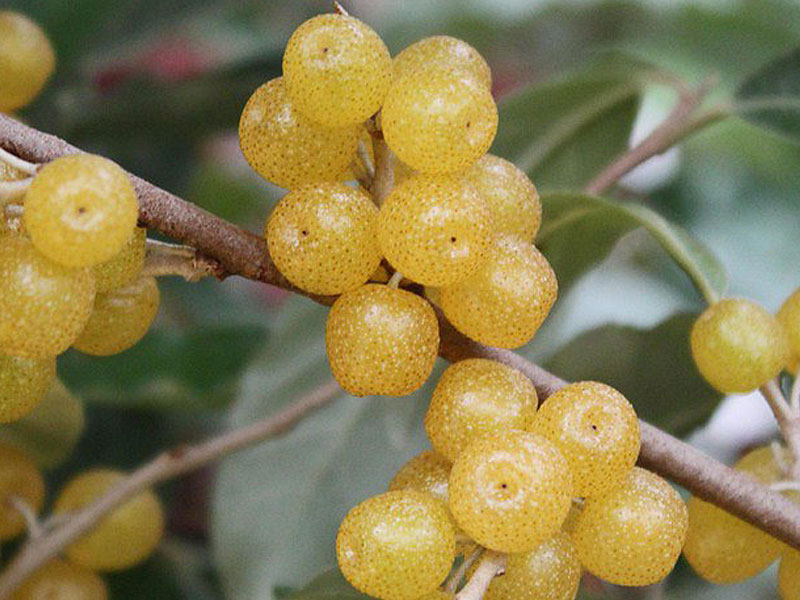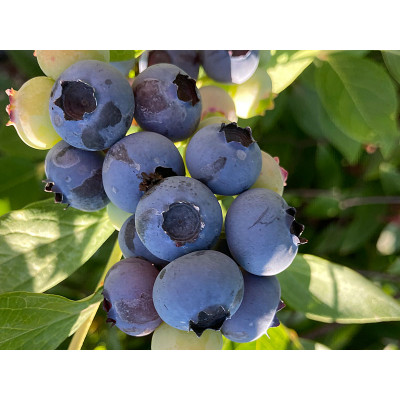Oleaster (elaeagnus umbellata) POINTILLA FORTUNELLA


New


- All the plants that we have on offer and that you can order are actually in stock.
- The standard delivery time is 2-3 working days.
- We always ship parcels on Mondays, Tuesdays and Wednesdays.
- By arrangement, we can also ship plants on Thursdays or Fridays (we do not normally ship on these days in case there is a problem so that the parcels are not left in the depot unnecessarily over the weekend).
- The shipping price depends on the weight of the ordered goods (the more products, the cheaper the price)
- after you have placed the plants in the shopping cart, enter “calculate provisional shipping price” in the shopping cart, after entering the data the eshop will calculate the provisional shipping price for you.
Ask a Question About This Product
Oleaster (elaeagnus umbellata) POINTILLA FORTUNELLA
| Specifications | |
| Height at sale | 50cm |
| Pot | C2 |
| Sell as | 2 year old |
| Ripening time | August/September |
The standard delivery time is 3-4 working days.
We send goods on Monday, Tuesday, Wednesday, by agreement also Thursday or Friday.
We send goods on Monday, Tuesday, Wednesday, by agreement also Thursday or Friday.
Price
19,50€
- Stock: In Stock
- Model: Elaeagnus umbellata
The 'Pointilla Fortunella' must catch the eye at first sight. It is an interesting fruit on its own, which will also win you over among other varieties. It is mostly a red berry with a stone, high in vitamin C and antioxidants. However, the 'Pointilla Fortunella' is different at first sight. While retaining all the characteristics of the hawthorn, in this case it is a distinctive bright yellow variety. The plant grows to a maximum height of 3 metres. The yellow fruits may be covered with fine, even tiny brown dots and the leaves may also have tiny brown dots on the underside. The variety can be used to complement the cultivation of another red variety. You can get a combination of yellow and red fruits at the same time, which are also visually interesting in compotes. This variety is also popular both for direct consumption and for processing.
It is still an unusual fruit in this country. The fruit grows on a fast-growing, dense fruit bush which may remotely resemble a cherry tree. No wonder, then, that in the British Isles and in the USA, where the fruit is popular in pies and jams, it is called simply cherry. The fruit is known for its vitamin C content and high antioxidant content. Elaeagnus umbellata requires another plant as a pollinator. A plant of its own species, or a relative. After a couple of years, it is advisable to remove the old woody and non-producing shoots from the inside of the plant and leave the young and fruiting shoots untouched. This will help to increase production as well as room for the plant to grow. Older three-year-old shoots can also be removed as part of the maintenance pruning in early spring.
Plants can cope with drought and irregular watering. An important characteristic is that they are not soil-intensive, so they can be grown in soils with clay content. Of course, fertile, humic soil will always be an asset and an advantage. A sunny position or partial shade is preferable. However, not too much shade, which can be detrimental to the plant. Another advantage of hawthorns is their relatively good resistance to pests and diseases, but also to frost. For the grower, it is an unpretentious fruit representative, which in recent years has also been mentioned as an alternative for hedges. It produces white, small, elongated flowers during May and fruit during July. All varieties bearing the Pointilla® label are considered hardy and suitable for urban development and for growing in residential terraces and balconies (in containers).

















































































